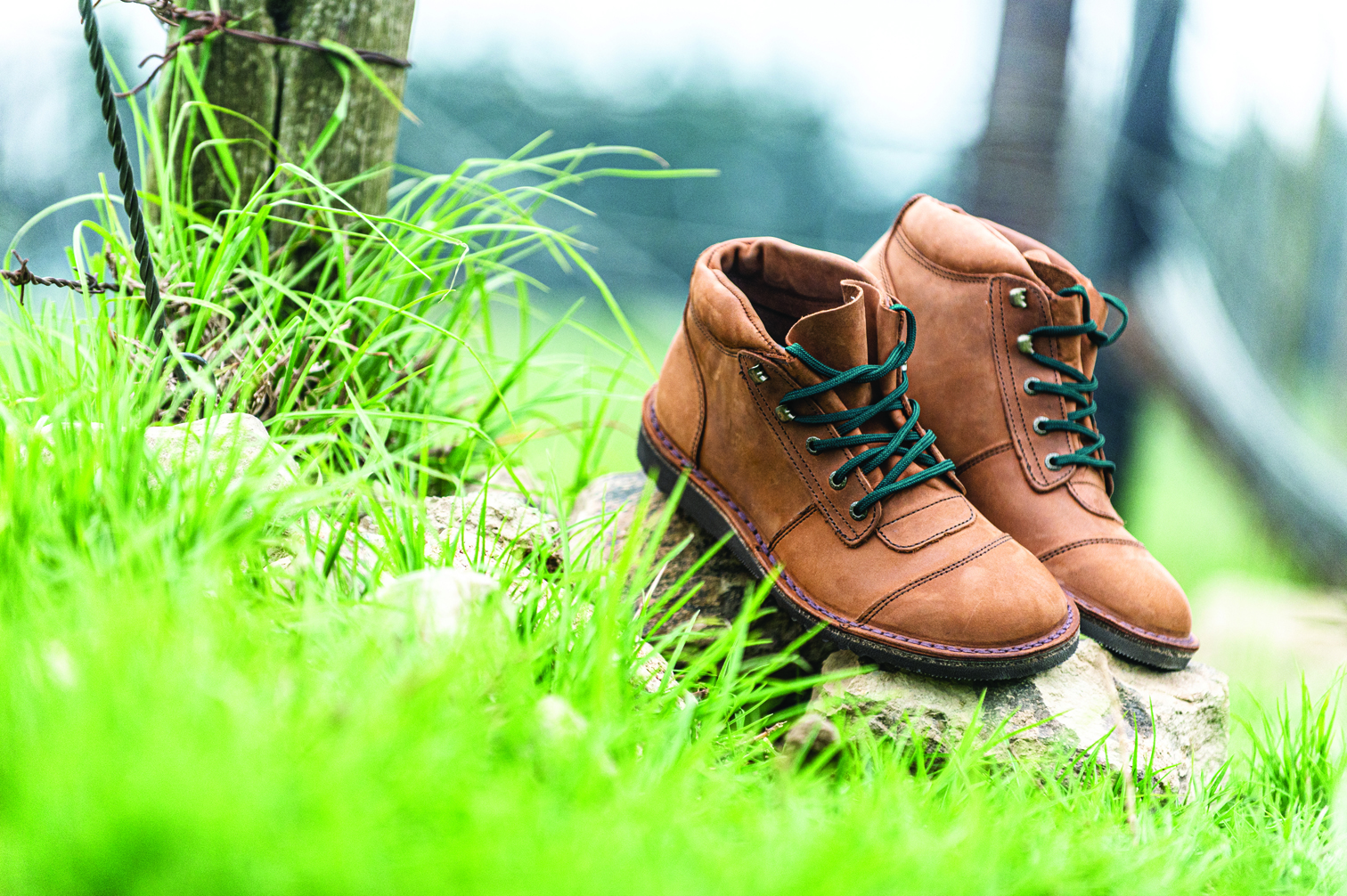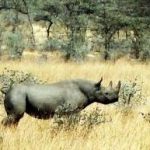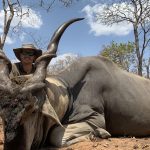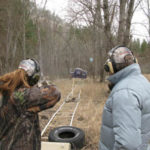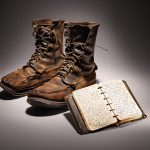If you’re looking for a good pair of boots for safari, take a look at what the professional hunters wear.
I had been searching for a pair of really good safari hunting boots for the last few years, but hadn’t found anything that impressed me. On my last Mozambique safari, my guide, Rye Pletts, was wearing exactly the type of boot I’d looking for and when I asked him the brand, he told me they were Jim Green boots. Later that evening, I noticed that almost all the PHs in camp were wearing Jim Greens, and everyone seemed pleased with them. Since guys who made their living hunting big game in remote areas had nothing but praise for these boots, I knew I needed to take a closer look at them.
Mark Haldane of Zambeze Delta Safaris put me in touch with Gareth Crouch, a third-generation shoe and boot maker from Pietermaritzburg, South Africa, and the managing director of his family’s Jim Green Footwear company. Prior to working in the boot-making industry, Crouch served as a game ranger and safari guide in Kruger National Park, so he had firsthand knowledge of how hunting boots should be made.
In 1987, Gareth’s father and grandfather left the shoe factory where they worked and formed their own company, Crouch Footwear. Gareth’s father, Peter, and his business partner then founded a separate boot company in 1992 and called it Jim Green, after the frogs of the same name that are found along rivers in the Midlands Meander of KwaZulu Natal. Originally, Jim Green boots were built for farmers who needed a sturdy leather shoe that could last for years. Later, the company’s Razorback boots became the favorite footwear of miners and contract workers across southern Africa.
In 2013, Gareth joined the company. He developed a social media platform to help spread the word about the company’s boots, but soon he realized that the brand needed to be available to more customers.
“I approached my father about selling our boots on Amazon, and he told me that was a crazy idea,” Gareth said. “I did more research and went back to him after a month, but he still said no. After the third attempt, I decided I was going to go ahead and sell on Amazon anyway.”
Gareth purchased thirty to fifty Jim Green boots at a time with his own money and began selling them on Amazon. Eventually, he saved enough money to purchase 2,000 pairs of boots and shipped them in a container to the United States. Jim Green boots began to develop an international following, particularly among hunters.
Gareth designed the company’s popular African Ranger boot and wore them for six months, making improvements to the design as needed. Once the African Ranger design was finalized, Gareth shipped sixty pairs of boots to rangers in Zimbabwe’s Gonarezhou National Park in Zimbabwe for a year-long trial. At the end of the test period, the rangers were so impressed they purchased 150 pairs. Gareth agreed to match their initial purchase, shipping an additional 150 pairs at no cost.
“If shoe companies pay athletes to support their brand, we wanted to support rangers who often work behind the scenes,” Gareth said. Today, Jim Green continues supporting rangers by donating one free pair of Ranger boots to a game ranger for every ten pairs sold. To date, Jim Green has supplied more than 2,000 African game rangers with boots.
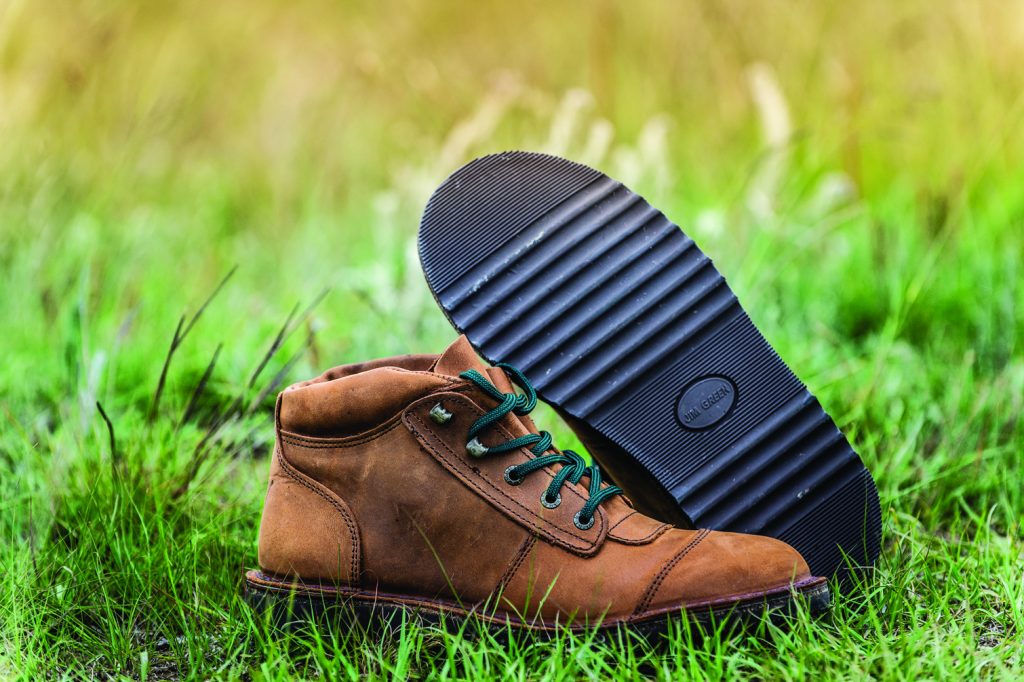
When Gareth sent me a pair of Ranger boots, I was immediately impressed. These boots support the foot and offer protection against thorns and rocks, yet they are more comfortable than most hiking shoes. Perhaps most important, the wedge-style rubber sole allows hunters to stalk quietly through the brush, even over dry leaves. They’re lighter than many competing boots, and the insole is stitched to the upper using double-stitched 2.2mm braided nylon cord. To further enhance durability, there’s a steel shank between the insole board and the sole, and heel and toe stiffeners offer additional support. The toe, heel, and eyelet areas feature a double layer of 2.2mm full-grain leather, and the hooks and eyelets are very heavy duty to stand up to years of hard use.
I haven’t spent a full year in these boots like the Gonarezhou Rangers did, but my initial tests have been very impressive. These boots are extremely comfortable with ample support and a secure fit, and they’re the quietest stalking boots I’ve ever tested. Even after hiking several miles, there was no soreness or blistering, and they are suitable for rough, rocky terrain. Superior materials and excellent build quality ensure that these boots will last, and the attractive styling (complete with green laces and a signature Jim Green frog wearing a top hat and boots and holding a rifle and flag) make them suitable for everyday wear.
After years of searching, I’ve finally found my go-to safari boots, and it’s good to know that the brand is reinvesting in conservation of African wildlife by supporting game rangers. In fact, I like these boots so much that I’ve just purchased a second pair. African Ranger boots are available in black, brown, and fudge colors and carry an MSRP of $169. There’s also a Cape buffalo skin version ($220) as well as an 8-inch version known as the AR8 that offers additional support ($209). For more information, visit JimGreenFootwear.com

